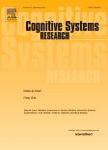版权所有:内蒙古大学图书馆 技术提供:维普资讯• 智图
内蒙古自治区呼和浩特市赛罕区大学西街235号 邮编: 010021

作者机构:Univ Bremen BSCC Bremen Germany Univ Jaume 1 Castellon de La Plana Spain
出 版 物:《COGNITIVE SYSTEMS RESEARCH》 (Cogn. Sys. Res.)
年 卷 期:2018年第52卷
页 面:82-102页
核心收录:
学科分类:0402[教育学-心理学(可授教育学、理学学位)] 04[教育学] 1001[医学-基础医学(可授医学、理学学位)] 0812[工学-计算机科学与技术(可授工学、理学学位)]
基 金:Bremen Spatial Cognition Centre4 (BSCC) University Bremen under project Cognitive Qualitative Descriptions and Applications (CogQDA) Erasmus + Internship program
主 题:Qualitative spatial reasoning Qualitative shape descriptor Shape composition Angle composition Length composition Logic Tangram Puzzle Spatial cognition Spatial reasoning tests Prolog Logic programming
摘 要:A logical approach to compose qualitative shape descriptors (LogC-QSD) is presented in this paper. Each object shape is described qualitatively by its edges, angles, convexities, and lengths. LogC-QSD describes the shape of composed objects qualitatively adding circuits to describe the connections among the shapes. It also infers new angles and lengths using composition tables. Its main contributions are: (i) describing qualitatively the resulting boundary of connecting N shapes and (ii) its application to solve spatial reasoning tests. LogC-QSD approach has been implemented using Prolog programming language, which is based on Horn clauses and first order logic. The testing framework was SWI-Prolog on the LogC-QSD dataset. The obtained results show that the LogC-QSD approach was able to correctly answer all the questions in the LogC-QSD dataset, which involved compositions up to five shapes. The correct answer for 60% of the questions was obtained in an average time of 2.45.10(-4) s by comparing the concavities and right angles of the final QSD composed shape with the possible answers. The rest of the questions required a matching algorithm and they were solved by LogC-QSD in an average time of 19.50.10(-4) s. Analysis of the execution times obtained showed that the algorithmic cost of LogC-QSD is lower than O(n(2)) in the worst case. (C) 2018 Elsevier B.V. All rights reserved.